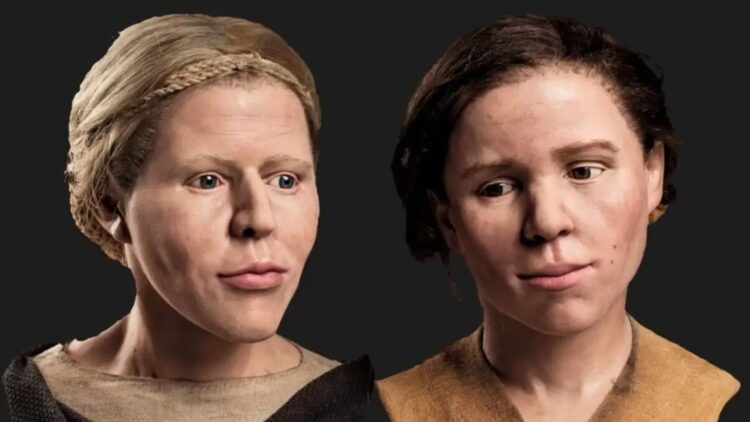Discovering ancient remains has always been a fascinating thing, as the bodies of those who lived before us can tell us a lot about where we come from, how we lived and the history of who we are. That is why when two prehistoric sisters along with a baby and a dog were found in southern Moravia, in the Czech Republic archaeologists were so enthused, as it could give even more clues and more context of life in the neolithic period and the rituals that they observed.
The bodies were found in a place called the Krumlov Forest that has been on archaeologists’ radar since way back in the 1800s. What makes it so special is the prevalence of flint, which was used mainly for making tools. But it was not until archaeology really became popular and as science years later than excavations began with purpose, and in the 1990 they revealed that the forest was actually one of the biggest flint mining spots in Europe, used from the Mesolithic period all the way into the Iron Age.
What this meant was a lot of tools and markings were found that gave more context to the history of the region and the forest, but soon they uncovered shaft number 4. Here is were they found the remains, all of which were more than 6,000 years old.
The sisters found in the Krumlov Forest
Although just finding the bodies would have been a great find, there is a lot more than meets the eye with this discovery, which archaeologist published soon after in Archaeological and Anthropological Sciences. Genetic data indicated that the two women might have been sisters and that they had gone through a lot in their short lives. Their bones told stories of illness, strain, and intense physical labor and their burial suggested that they may have been part of a ritual burial, maybe as offerings to ensure success in the mines. Considering the period and the markings surrounding them, archaeologists have thought that that they were sacrificed or forced into harsh work underground.
Given their small size, 1.46 to 1.48 meters tall and the clear signs of childhood malnutrition these two women undoubtedly lived a harsh life. But their age at burial was estimated to be between 30 and 40 years old and as adults they had a diet richer in meat than what was normal for Neolithic residents in that region, which may have meant their situation improved. But other signs in their bodies contradict this, like their spines showing damage that pointed to long-term physical stress, conditions like osteoarthritis, herniated disks, and even a badly healed elbow fracture. There were also signs that they kept working despite being injured and in pain, and their vertebrae were also marked by conditions like spondylolysis and bone spurs.
But it is not just their physical condition that was fascinating, the personal details that scientists were able to ascertain about the sisters thanks to the genetic testing were impressive, one of the women had green or hazel eyes, and the other, with a 90% likelihood, had blue eyes. The team was also able to try to recreate what they looked like with fairly accurate precision, and the busts based on their skulls are on display at the Moravian Museum in Brno.
But the baby is even more of a mystery, as DNA showed that neither woman was the mother. “A mystery that to this day we have not been able to solve. It cannot be ruled out that the child died during the same period, although his presence in the well remains a mystery,” the archaeologists admitted.

